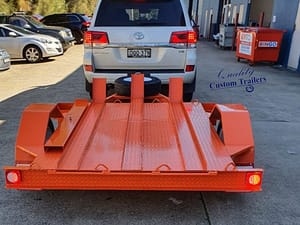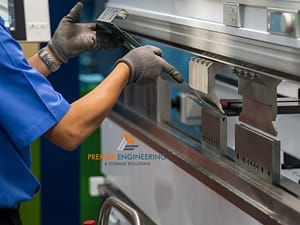Roof restoration is a crucial aspect of home maintenance, involving a series of steps to return a roof to its best condition. The type of roof – whether tile, metal, shingle, or flat – dictates different restoration approaches. Understanding these differences is vital for effective restoration, as each material has its specific wear patterns, vulnerabilities, and maintenance needs.
Overview of common roof types that typically require restoration.
Common roof types requiring restoration include tile roofs, known for their durability but susceptibility to cracking; metal roofs, which can corrode or rust over time; and shingle roofs, which may suffer from wear or damage due to environmental factors. Each type benefits from a tailored approach in both repair and maintenance to extend its lifespan and maintain its functionality.
Restoration Techniques for Tile Roofs
Specific challenges and restoration techniques for tile roofs.
Challenges with tile roofs include cracking, breakage, and moss or algae growth. Restoration typically involves replacing damaged tiles, applying sealants, and cleaning to remove any organic growth. It’s important for a professional roofer to conduct a thorough inspection to identify all areas of concern and to use the appropriate techniques that match the specific type of tile, whether clay, concrete, or slate.
Best practices for maintaining and restoring the integrity of tile roofing.
Best practices for tile roof restoration include regular inspections to detect issues early, gentle cleaning to avoid damage, and using the right sealants to protect against weathering. Periodic checking of the roof underlayment is also crucial, as this can be a source of leaks if deteriorated. Professionals skilled in roof tiles and roof repair should be consulted to ensure quality workmanship.
Metal Roof Restoration: Process and Considerations
Key steps in the restoration process for metal roofs.
The restoration process for metal roofs typically involves cleaning the roof surface, treating any rust or corrosion, and applying a protective coating. This process not only addresses current issues but also helps prevent future problems. It’s crucial to thoroughly prepare the surface by removing old paint, rust, and debris to ensure the new coating adheres properly.
Considerations for dealing with rust, corrosion, and sealing in metal roofing.
When restoring a metal roof, attention should be given to areas prone to rust and corrosion, especially seams and fasteners. Using rust-inhibiting products is essential in these areas. Sealants may be applied to joints and edges to prevent leaks. Choosing quality roofing solutions and materials for the restoration process can significantly extend the life of a metal roof.
Approaches to Flat Roof Restoration
Unique challenges presented by flat roofs in restoration projects.
The primary challenge with flat roofs is drainage. Unlike sloped roofs, flat roofs don’t naturally shed water, making them more susceptible to water pooling and leaks. This can lead to accelerated wear and tear. Additionally, flat roofs are more prone to cracking and blistering under UV exposure and temperature fluctuations.
Effective restoration techniques and materials for flat roofs.
Restoration of flat roofs often involves repairing or replacing the waterproof membrane. Materials like EPDM (rubber), PVC, or TPO are commonly used for their durability and water resistance. Proper sealing around roof penetrations and edges is crucial. Adding a reflective coating can also protect against UV damage and reduce heat absorption, enhancing the roof’s lifespan and energy efficiency.
Restoring Shingle Roofs: Materials and Techniques
Overview of materials and methods used in restoring shingle roofs.
Materials commonly used in shingle roof restoration include asphalt, wood, or composite shingles. The restoration process typically involves replacing damaged or worn shingles, applying sealants, and sometimes adding a new layer of shingles over the existing one. The choice of material depends on factors like the existing roof material, climate, and desired aesthetic.
Identifying and addressing common issues in shingle roof restoration.
Common issues with shingle roofs include curling or missing shingles, granule loss, and moss growth. Identifying these problems early is key to effective restoration. Addressing underlying issues such as poor ventilation or leaking gutters is also crucial in preventing recurring problems.
Specialized Restoration for Heritage and Unique Roof Designs
Approaches to restoring heritage roofs and roofs with unique designs.
Restoring heritage roofs often involves using specific materials and techniques that match the building’s period and style. This might include sourcing rare materials or employing traditional craftsmanship methods. The focus is on preserving original features while ensuring the roof’s structural integrity.
Balancing preservation and practical restoration in special roof types.
The key challenge in these restoration projects is balancing historical preservation with modern roofing solutions’ practicality and efficiency. This might involve using modern materials that mimic the look of the original ones or integrating modern waterproofing techniques without altering the roof’s appearance. Consulting with specialists in heritage restoration is often necessary for such projects.
Cost and Duration: Expectations for Different Roof Restorations
Estimating the cost and time frame for restoration projects across various roof types.
The cost of roof restoration varies significantly depending on the roof type. For example, restoring a tile roof may be more expensive due to the cost of materials and the labor-intensive process. Metal roofs, on the other hand, might require less labor but more on materials if coatings or rust treatments are needed. Flat roofs may involve costs for specialized waterproofing materials. The duration of the project also varies, with some restorations taking a few days, while more complex projects could span several weeks.
Factors influencing the cost and duration of roof restoration.
Key factors impacting cost include the size of the roof, the extent of damage or wear, the cost of materials, and labor rates. Duration is influenced by the scope of work, weather conditions, and any unexpected challenges that arise during the project. Accessibility and the need for specialized equipment can also play a role in both cost and timeline.
Preventive Measures and Long-term Care Post-Restoration
Preventive measures to prolong the life of restored roofs.
Regular inspections are crucial to identify and address minor issues before they become major problems. For tile roofs, this might include checking for cracked or broken tiles, while for metal roofs, it’s important to look for signs of rust or corrosion. Keeping gutters clean and ensuring proper drainage is essential for all roof types.
Essential maintenance tips post-restoration for different roof types.
For shingle roofs, regular cleaning to remove debris and prevent algae or moss growth is important. Flat roofs require periodic checks for pooling water and seal integrity. Applying protective coatings can help extend the life of metal roofs. Each roof type will have specific maintenance needs that should be adhered to for optimal longevity.
Conclusion
By tailoring the restoration process to the specific type of roof, homeowners can ensure that they’re not only fixing current issues but also preventing future problems. This approach leads to more sustainable, cost-effective, and long-lasting roofing solutions, ultimately protecting the investment in one’s home and ensuring the safety and comfort of its occupants.






